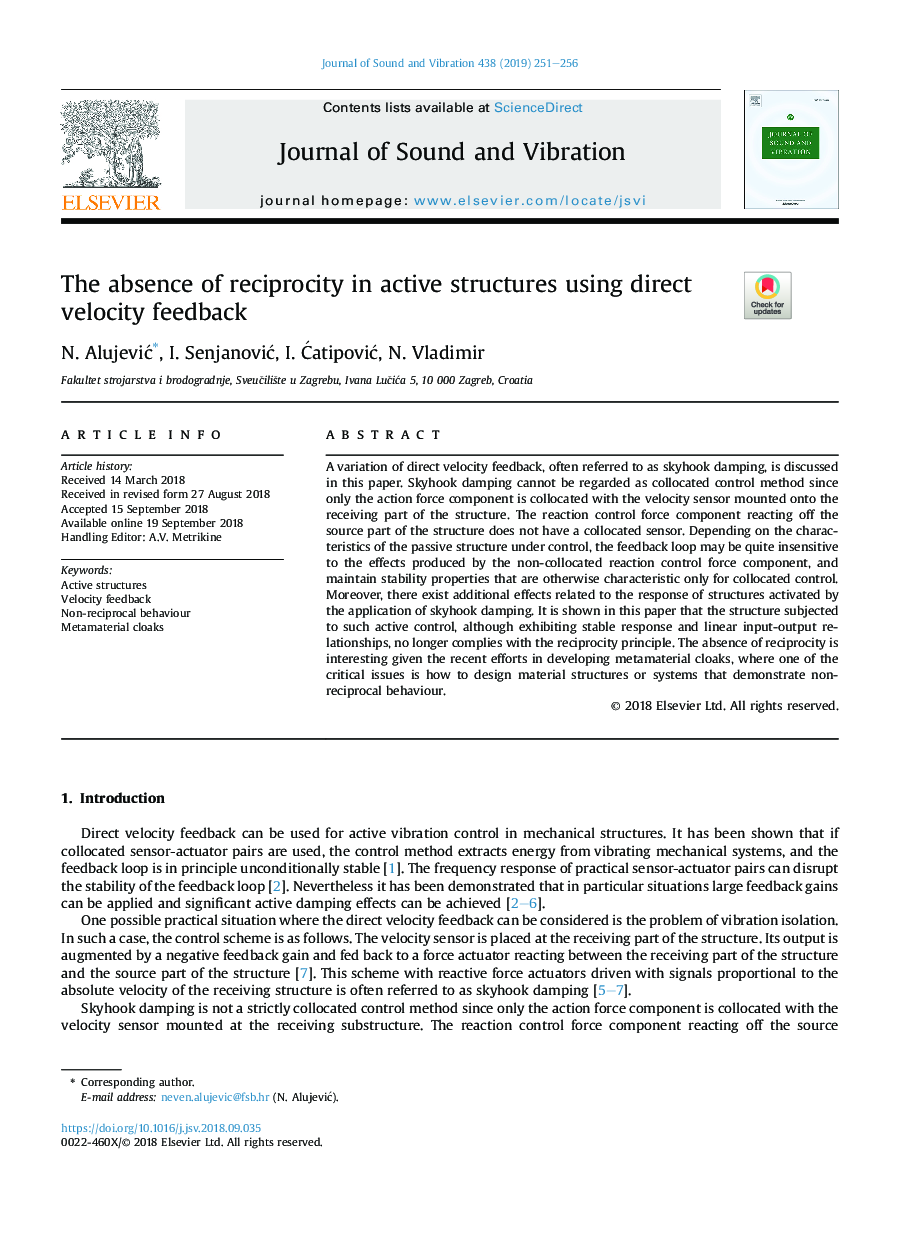| Article ID | Journal | Published Year | Pages | File Type |
|---|---|---|---|---|
| 11024178 | Journal of Sound and Vibration | 2019 | 6 Pages |
Abstract
A variation of direct velocity feedback, often referred to as skyhook damping, is discussed in this paper. Skyhook damping cannot be regarded as collocated control method since only the action force component is collocated with the velocity sensor mounted onto the receiving part of the structure. The reaction control force component reacting off the source part of the structure does not have a collocated sensor. Depending on the characteristics of the passive structure under control, the feedback loop may be quite insensitive to the effects produced by the non-collocated reaction control force component, and maintain stability properties that are otherwise characteristic only for collocated control. Moreover, there exist additional effects related to the response of structures activated by the application of skyhook damping. It is shown in this paper that the structure subjected to such active control, although exhibiting stable response and linear input-output relationships, no longer complies with the reciprocity principle. The absence of reciprocity is interesting given the recent efforts in developing metamaterial cloaks, where one of the critical issues is how to design material structures or systems that demonstrate non-reciprocal behaviour.
Keywords
Related Topics
Physical Sciences and Engineering
Engineering
Civil and Structural Engineering
Authors
N. AlujeviÄ, I. SenjanoviÄ, I. ÄatipoviÄ, N. Vladimir,
